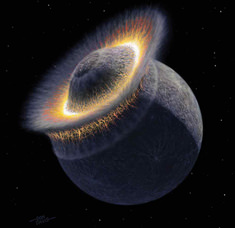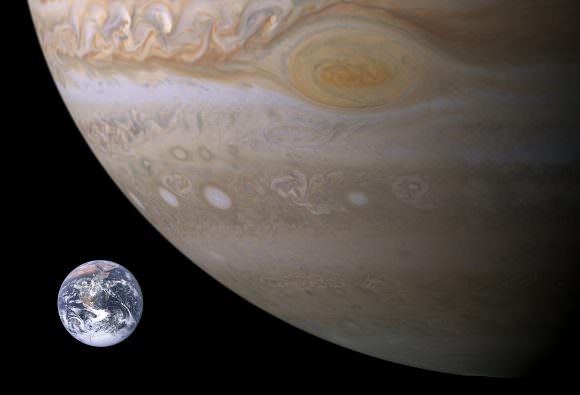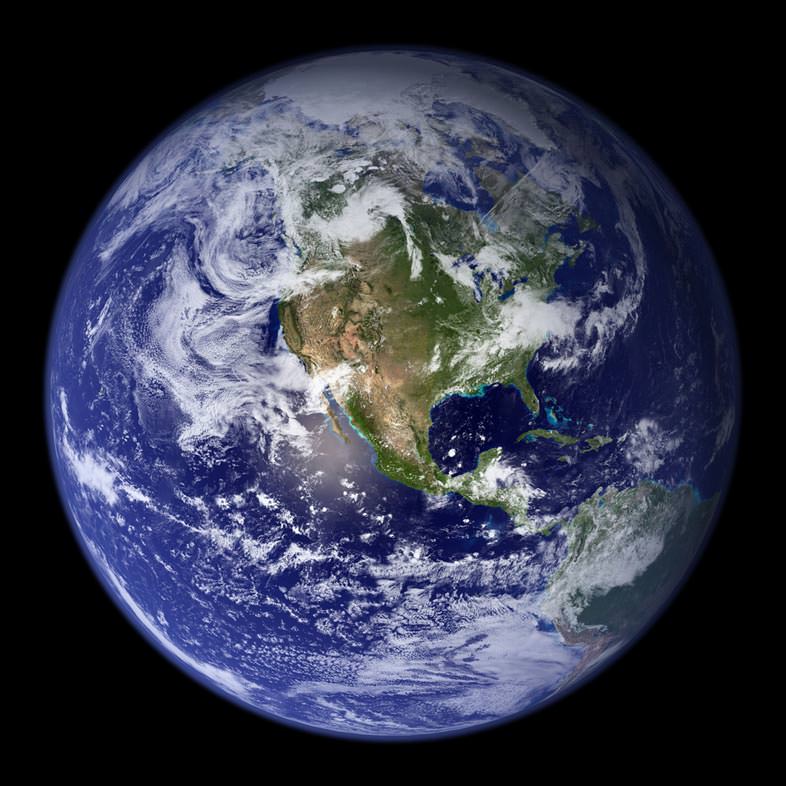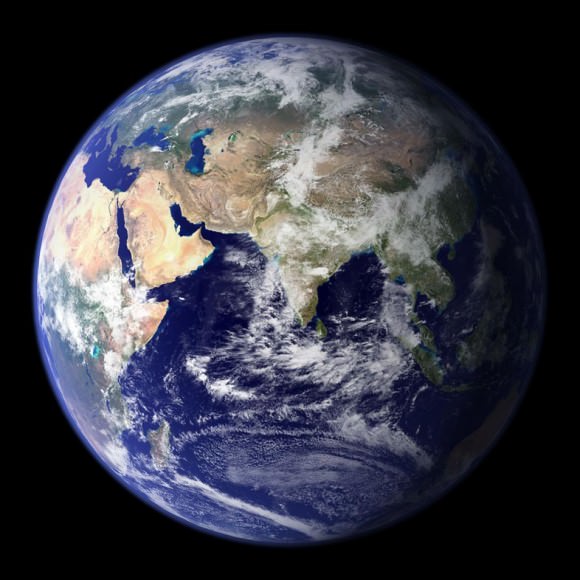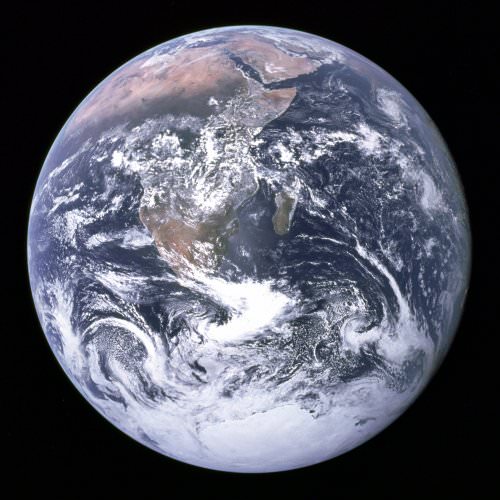[/caption]
The Earth and Moon were created as the result of a giant collision between two planets the size of Mars and Venus. Until now it was thought to have happened when the solar system was 30 million years old or approximately 4.5 billion years ago. But new research shows that the Earth and Moon may have formed much later – perhaps up to 150 million years after the formation of the solar system.
“We have determined the ages of the Earth and the Moon using tungsten isotopes, which can reveal whether the iron cores and their stone surfaces have been mixed together during the collision,” said Tais W. Dahl, from the Niels Bohr Institute at the University of Copenhagen in collaboration with professor David J. Stevenson from the California Institute of Technology (Caltech).
The planets in the solar system were created by collisions between planetary embryos orbiting the newborn sun. In the collisions the small planets congealed together and formed larger and larger planets. When the gigantic collision occurred that ultimately formed the Earth and Moon, it happened at a time when both planetary bodies had a core of metal (iron) and a surrounding mantle of silicates (rock). But when did it happen and how did it happen? The collision took place in less than 24 hours and the temperature of the Earth was so high (7000º C), that both rock and metal must have melted in the turbulent collision. But were the stone mass and iron mass also mixed together?
The age of the Earth and Moon can be dated by examining the presence of certain elements in the Earth’s mantle. Hafnium-182 is a radioactive substance, which decays and is converted into the isotope tungsten-182. The two elements have markedly different chemical properties and while the tungsten isotopes prefer to bond with metal, hafnium prefers to bond to silicates, i.e. rock.
It takes 50-60 million years for all hafnium to decay and be converted into tungsten, and during the Moon forming collision nearly all the metal sank into the Earth’s core. But did all the tungsten go into the core?
“We have studied to what degree metal and rock mix together during the planet forming collisions. Using dynamic model calculations of the turbulent mixing of the liquid rock and iron masses we have found that tungsten isotopes from the Earth’s early formation remain in the rocky mantle,” said Tahl.
The new studies imply that the moon forming collision occurred after all of the hafnium had decayed completely into tungsten.
“Our results show that metal core and rock are unable to emulsify in these collisions between planets that are greater than 10 kilometers in diameter and therefore that most of the Earth’s iron core (80-99 %) did not remove tungsten from the rocky material in the mantle during formation” said Dahl.
The result of the research means that collision that created the Earth and the Moon may have occurred as much as 150 million years after the formation of the solar system, much later than the 30 million years that was previously thought.
The research results have been published in the scientific journal, Earth and Planetary Science Letters.
From a University of Copenhagen press release.

